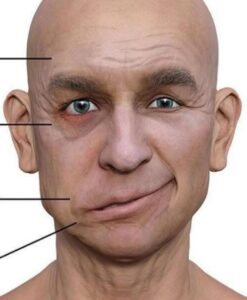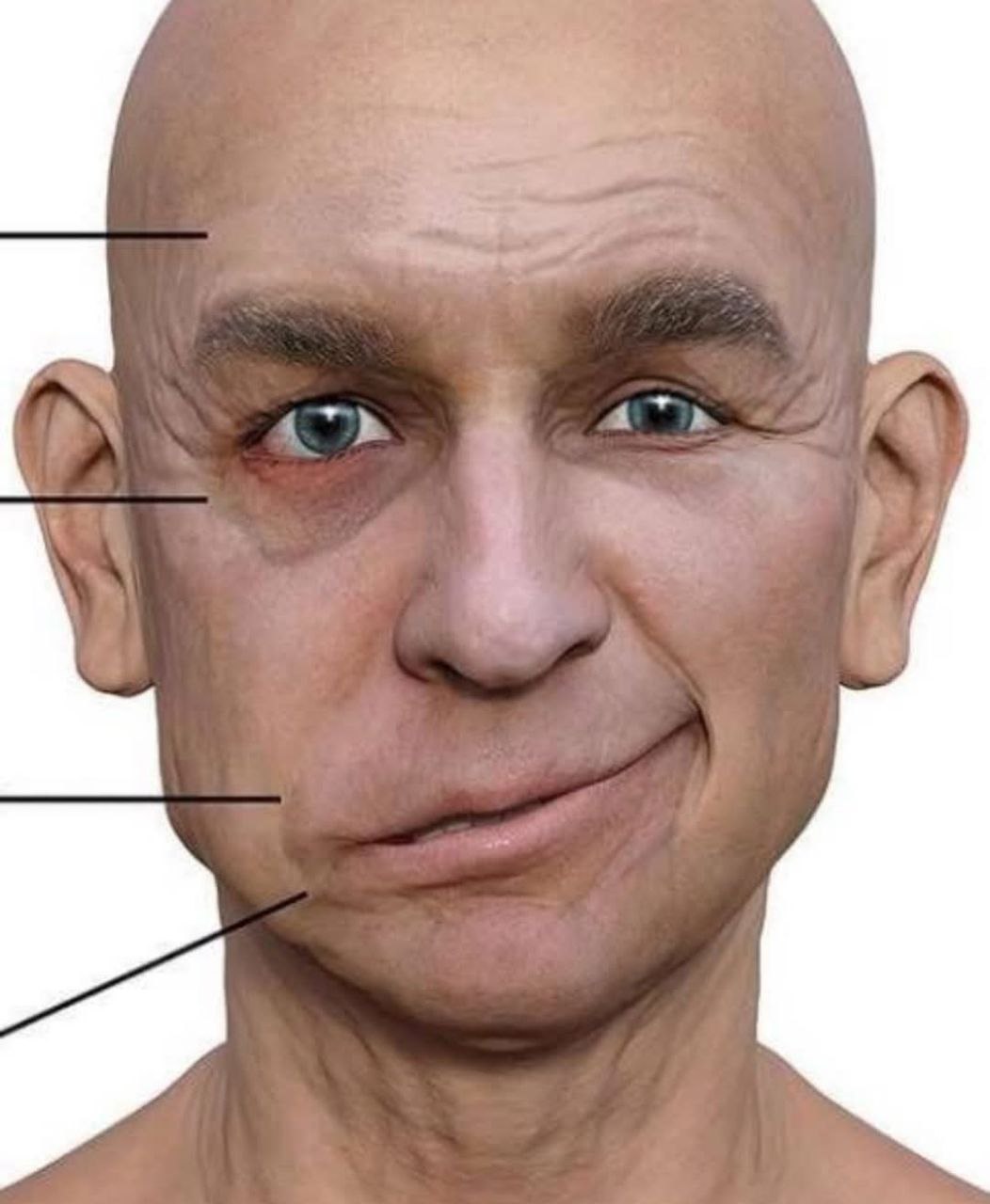A stroke occurs when the blood supply to part of the brain is interrupted or reduced, preventing brain tissue from getting oxygen and nutrients. This can lead to brain cell death within minutes. Strokes are a medical emergency and require immediate treatment.

Symptoms of Stroke
The symptoms of a stroke can be remembered using the acronym FAST:
- Face drooping: One side of the face may droop or feel numb.
- Arm weakness: Weakness or numbness in one arm.
- Speech difficulty: Slurred or garbled speech, or difficulty understanding speech.
- Time to call emergency services: Immediate medical attention is critical.
Other symptoms may include:
- Sudden confusion or trouble understanding.
- Sudden trouble seeing in one or both eyes.
- Sudden severe headache with no known cause.
- Sudden trouble walking, dizziness, or loss of balance.
Causes of Stroke
Strokes are broadly categorized into three types based on their cause:
- Ischemic Stroke (most common, ~87% of cases):
- Caused by a blockage in an artery supplying blood to the brain, often due to:
- Blood clots (thrombosis).
- Fatty deposits (atherosclerosis) in blood vessels.
- Caused by a blockage in an artery supplying blood to the brain, often due to:
- Hemorrhagic Stroke:
- Caused by a ruptured blood vessel in the brain, often due to:
- High blood pressure (hypertension).
- Aneurysms or weak blood vessel walls.
- Caused by a ruptured blood vessel in the brain, often due to:
- Transient Ischemic Attack (TIA) (“mini-stroke”):
- Temporary blockage of blood flow to the brain, often a warning sign of a future stroke.
Sources of Risk Factors
Risk factors for stroke include:
- Medical Conditions:
- High blood pressure (hypertension).
- High cholesterol.
- Diabetes.
- Obesity.
- Heart disease (e.g., atrial fibrillation).
- Previous stroke or TIA.
- Lifestyle Factors:
- Smoking.
- Excessive alcohol consumption.
- Sedentary lifestyle.
- Unhealthy diet (high in saturated fats, salt, and sugar).
- Genetic Factors:
- Family history of stroke.
- Genetic conditions like sickle cell anemia.
Occupations or Professions at Risk
Certain occupations may increase the risk of stroke due to stress, sedentary behavior, or exposure to harmful conditions:
- High-Stress Jobs:
- Healthcare workers, emergency responders, and corporate executives often face high stress, which can elevate blood pressure.
- Sedentary Jobs:
- Office workers, truck drivers, and IT professionals who sit for long periods are at higher risk of obesity and poor circulation.
- Shift Workers:
- Irregular sleep patterns (e.g., nurses, factory workers) can disrupt circadian rhythms and increase stroke risk.
- Physically Demanding Jobs:
- Construction workers and manual laborers may face dehydration or overexertion, which can contribute to stroke risk.
Ways to Prevent Stroke
Prevention focuses on managing risk factors and adopting a healthy lifestyle:
- Control Blood Pressure:
- Monitor and manage hypertension through medication and lifestyle changes.
- Healthy Diet:
- Eat a diet rich in fruits, vegetables, whole grains, and lean proteins.
- Limit salt, sugar, and saturated fats.
- Regular Exercise:
- Aim for at least 150 minutes of moderate-intensity exercise per week.
- Quit Smoking:
- Smoking increases the risk of stroke by damaging blood vessels.
- Limit Alcohol:
- Drink in moderation (up to 1 drink per day for women, 2 for men).
- Manage Chronic Conditions:
- Control diabetes, high cholesterol, and heart disease with medication and lifestyle changes.
- Maintain a Healthy Weight:
- Obesity increases the risk of stroke and other health complications.
- Regular Health Checkups:
- Early detection of risk factors can help prevent strokes.
Treatment for Stroke
Immediate treatment is critical to minimize brain damage and complications:
- Ischemic Stroke:
- Clot-busting drugs: Tissue plasminogen activator (tPA) can dissolve clots if administered within 4.5 hours of symptom onset.
- Mechanical thrombectomy: A procedure to remove the clot using a catheter.
- Hemorrhagic Stroke:
- Surgery: To repair blood vessel damage or remove blood from the brain.
- Medications: To control blood pressure and prevent seizures.
- Rehabilitation:
- Physical therapy, speech therapy, and occupational therapy to regain lost functions.
- Long-term Management:
- Medications to prevent future strokes (e.g., anticoagulants, antiplatelets).
- Lifestyle changes to reduce risk factors.
Stroke is a serious medical condition that requires prompt attention. By understanding the symptoms, causes, and risk factors, individuals can take proactive steps to prevent strokes. Early treatment and rehabilitation can significantly improve outcomes for stroke survivors.
